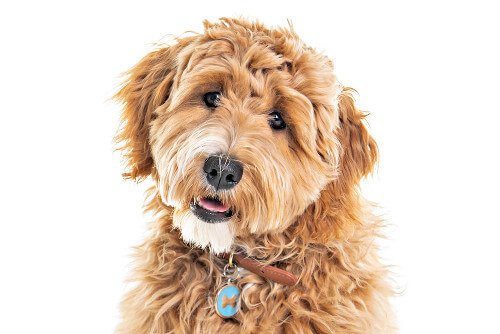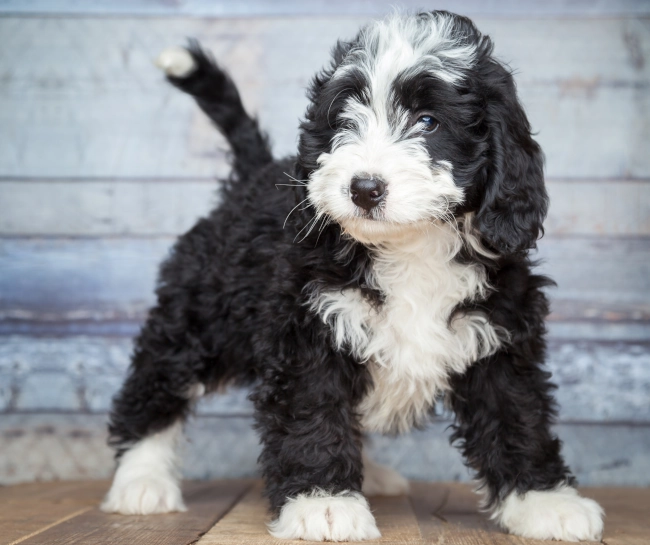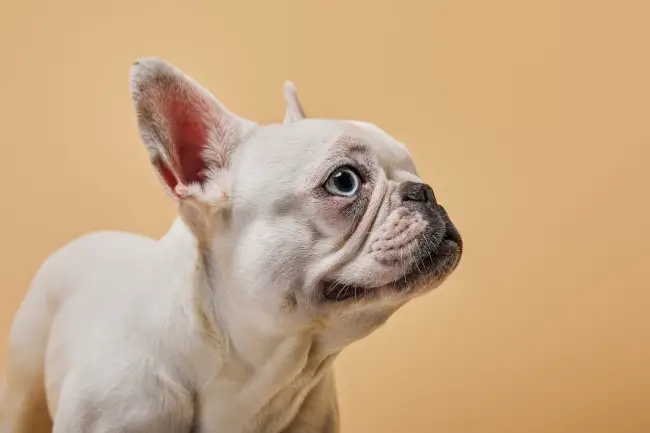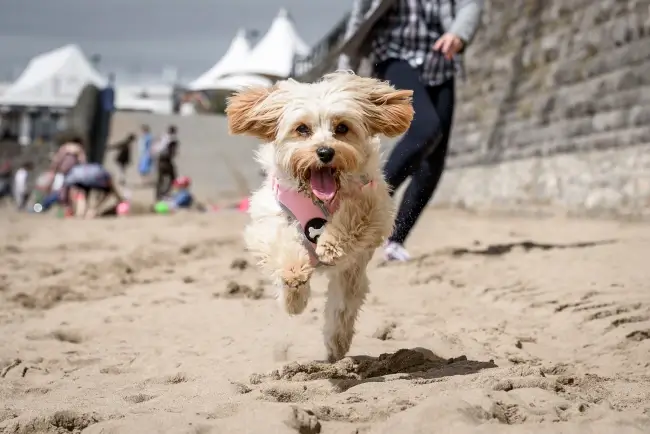Cava-Tzu: An Adorable Designer Breed
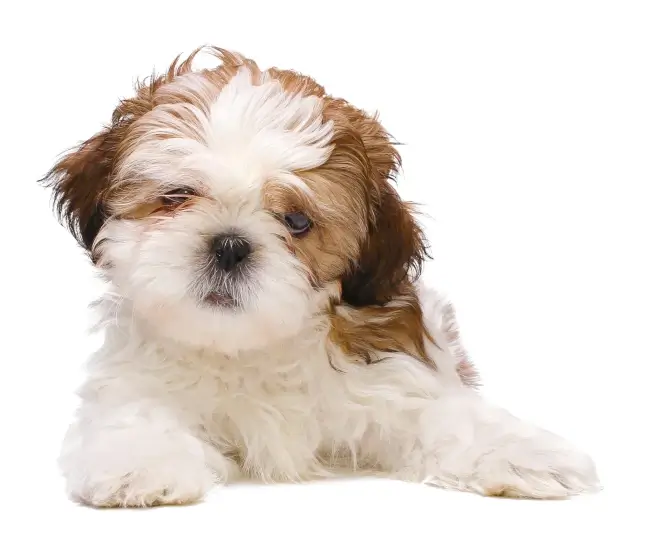
If you’re exploring the diverse world of dog breeds, then you might have come across this adorable mix breed.
The Cava-Tzu is a mix between a Cavalier King Charles Spaniel and a Shih Tzu, this hybrid breed has been gaining popularity due to its delightful personality and manageable size.
In this comprehensive guide, I’ll walk you through everything you need to know about these dogs, from their fascinating origin and unique appearance to their health concerns and grooming needs.
So, if you’re considering bringing a Cava-Tzu into your life or simply curious about this charming breed, keep reading!
This guide aims to offer an in-depth understanding of the Cava-Tzu and all its wonderful attributes.
Origin and History
The Cava-Tzu, a designer breed that has gained popularity over the past few decades can trace its origins back to the United States in the late 20th century.
The intentional crossbreeding of the Cavalier King Charles Spaniel and the Shih Tzu aimed to create a small, affectionate, and friendly dog that would make an ideal family pet and companion.
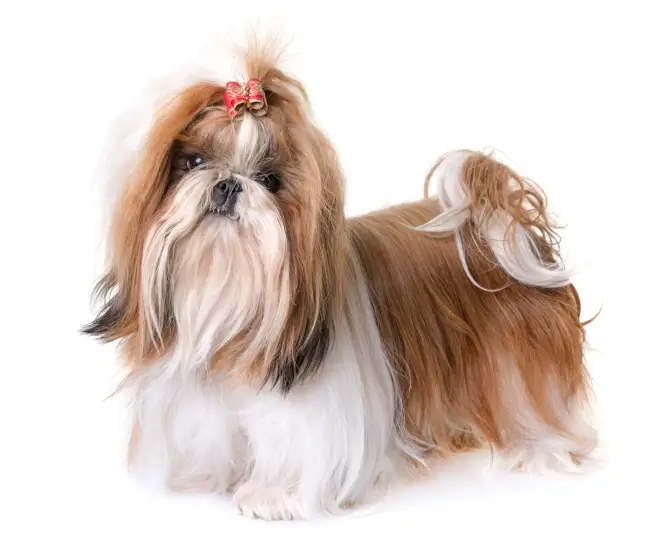
The Cavalier King Charles Spaniel, a toy breed originating from the United Kingdom, has a rich history that dates back to the 16th century.
These dogs were highly favored by British royalty, particularly King Charles II, who lent his name to the breed.
Their friendly demeanor and regal appearance made them popular as lapdogs among the nobility.
The Shih Tzu, also known as the “lion dog,” is an ancient breed that originated in China around 1,000 years ago.
Developed by crossing the Lhasa Apso and the Pekingese, the Shih Tzu was a beloved companion to Chinese emperors and their families.
The breed was eventually introduced to the Western world in the 20th century where it gained popularity as a cherished pet and show dog.
The Cava-Tzu combines the best traits of its parent breeds, including the affectionate nature and elegant appearance of the Cavalier King Charles Spaniel and the sweet temperament and beautiful coat of the Shih Tzu.
The breed’s increasing popularity can be attributed to its adaptability, making it suitable for various living situations and lifestyles.
As a designer breed, the Cava-Tzu is not recognized by major kennel clubs, but it has found a dedicated following among pet owners who appreciate its unique charm and qualities.
Cava-Tzu Appearance
The appearance of a Cava-Tzu can differ significantly depending on the influence of its parent breeds.
However, there are some common characteristics that most Cava-Tzus share making them easily recognizable and endearing to dog lovers.
They typically have a round, expressive face with large, dark eyes that exude warmth and intelligence.
Their black noses add a touch of contrast to their face and they may have an underbite, which is a common feature in Shih Tzus.
The ears are usually floppy and hang down close to the head giving them a sweet, approachable appearance.
Cava-Tzus have a small, sturdy body that is well-proportioned and compact.
They possess a moderate level of musculature making them both strong and agile.
The tail is often set high and may have a slight curl, similar to that of a Shih Tzu.
The coat of a Cava-Tzu can vary from silky and smooth to slightly wavy, depending on which parent breed’s coat type is more dominant.
They may have a single or double coat with the latter providing extra insulation and protection.
The coat colors can include black, brown, white, and various combinations of these shades.
Some Cava-Tzus may also have markings that resemble those of their Cavalier King Charles Spaniel parent, such as the signature “Blenheim” pattern of chestnut markings on a white background.
As a designer breed, the Cava-Tzu’s appearance can be less predictable than that of a purebred dog.
This variability contributes to their unique charm ensuring that each Cava-Tzu has its own distinctive look.
This diverse range of physical features makes them a fascinating and appealing breed for dog enthusiasts who appreciate individuality in their pets.
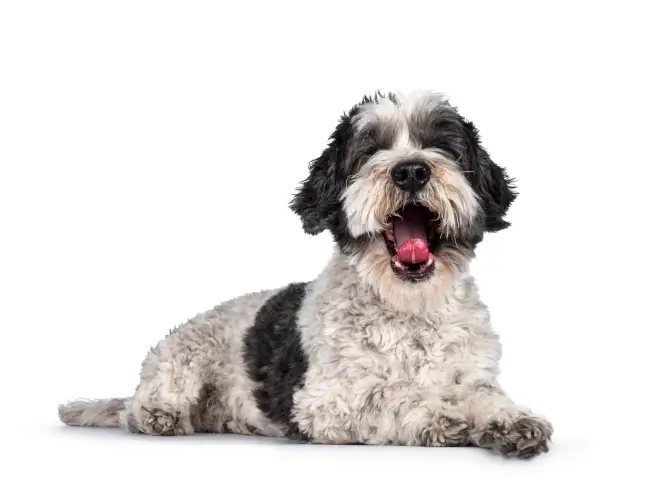
Size and Lifespan
The Cava-Tzu is a small-sized dog, making it a great option for those who prefer compact pets that are easier to handle and more adaptable to various living environments.
Their size also makes them well-suited for cuddling and sitting on laps which is a trait that many pet owners adore.
Size: Cava-Tzus typically weigh between 10 and 16 pounds with males generally being slightly larger than females.
At the shoulder, they measure approximately 9 to 12 inches in height.
This small stature makes them ideal for apartment living and convenient for traveling with their owners.
Lifespan: The Cava-Tzu boasts a relatively long lifespan for a dog of its size living an average of 12 to 15 years.
This longevity is a result of the hybrid vigor which is the improved health and vitality often observed in mixed-breed dogs due to a larger gene pool.
It is important to remember that this dog’s small size also means that they may be more prone to injury from falls or rough play.
Owners should take care to protect their Cava-Tzu from potential hazards and ensure that interactions with larger dogs or young children are supervised.
The Cava-Tzu’s compact size and extended lifespan make them a rewarding companion for those willing to provide the care and attention they need to thrive.
Health Issues Related to the Cava-Tzu
While the Cava-Tzu is generally a healthy mix breed, they can still inherit certain health issues from their parent breeds.
- Patellar Luxation: This condition occurs when the kneecap (patella) slips out of its normal position, causing discomfort and mobility issues. Small breeds like the Cava-Tzu are more prone to patellar luxation.
- Hip Dysplasia: This is a genetic disorder where the hip joint doesn’t develop properly, causing arthritis and pain in the affected joint. Although more common in larger breeds, small dogs like the Cava-Tzu can also be affected.
- Heart Murmurs: Both parent breeds are prone to heart murmurs, which are abnormal sounds heard during a heartbeat due to turbulent blood flow. Heart murmurs can be a sign of an underlying heart condition.
- Eye Issues: Cava-Tzus can inherit eye problems from their parent breeds, such as progressive retinal atrophy (PRA) and cataracts. PRA is a degenerative eye disorder that can eventually lead to blindness, while cataracts cause cloudiness in the eye’s lens, affecting vision.
- Brachycephalic Syndrome: Some Cava-Tzus may inherit the brachycephalic facial structure from their Shih Tzu parent, which can cause breathing difficulties due to the shortened nose and compressed upper respiratory system.
- Allergies: Like many dog breeds, Cava-Tzus can develop allergies to environmental factors, food, or flea bites. Symptoms may include itching, redness, and inflammation.
By staying informed about potential health issues and providing proper care, you can help ensure a long and healthy life for your Cava-Tzu.
Regular veterinary check-ups, vaccinations, and preventative care measures, such as flea and tick control, are essential for maintaining your pet’s well-being.

Grooming Requirements
Cava-Tzus have moderate grooming needs, requiring regular care to keep their coat healthy, clean, and tangle-free.
The specific grooming requirements may vary depending on the coat type inherited from their parent breeds.
To prevent matting and keep the coat looking its best, brush your Cava-Tzu at least a few times a week.
Use a slicker brush or a pin brush to gently work through any tangles or knots, starting from the head and working your way down the body.
Be gentle around sensitive areas, such as the ears and belly, to avoid causing discomfort.
Regular ear cleaning is essential to prevent infections and maintain your dog’s overall health.
Check their ears weekly for any signs of redness, discharge, or odor, which may indicate an infection.
Gently clean the outer ear with a cotton ball or soft cloth dampened with a veterinarian-approved ear-cleaning solution.
Avoid using cotton swabs or inserting anything into the ear canal, as this can cause injury.
These dogs are prone to dental issues so regular dental care is essential to prevent dental issues such as plaque buildup, gum disease, and bad breath.
Brush your Cava-Tzu’s teeth at least two to three times a week using dog-specific toothpaste and a soft-bristled toothbrush.
Temperament and Behavior
The Cava-Tzu is known for its friendly, affectionate, and adaptable temperament, making it a popular choice for families and individuals alike.
Their personality is influenced by both parent breeds resulting in a delightful blend of the Cavalier King Charles Spaniel’s warmth and the Shih Tzu’s charming disposition.
These dogs are known for their loving nature, quickly forming strong bonds with their family members.
They love to cuddle and be close to their owners, often seeking out human company and attention.
This characteristic makes them excellent companions and lap dogs.
Cava-Tzus are generally friendly towards other dogs and people, making them great additions to households with multiple pets or those that frequently entertain guests.
Early socialization is crucial for ensuring that these dogs are comfortable and confident in a variety of social situations.
Cava-Tzus have a playful and energetic side, enjoying games, toys, and interactive playtime with their owners.
While they have a moderate activity level, it’s essential to provide them with mental and physical stimulation to keep them happy and engaged.
They can be sensitive to their owners’ emotions and may mirror their feelings.
They respond best to positive reinforcement training methods and gentle correction as harsh treatment can be counterproductive and potentially harm their trusting nature.
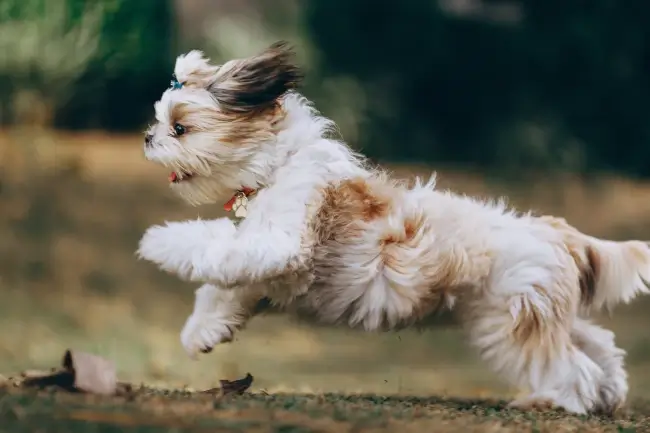
Exercise Needs
Cava-Tzus have moderate exercise needs requiring regular physical activity to maintain their health and happiness.
While they are not as high-energy as some other breeds, they still benefit from daily exercise to prevent boredom and potential behavior issues.
Aim to provide them with at least one brisk 30-minute walk per day depending on their age and fitness level.
If outdoor exercise is limited due to weather or other factors, provide indoor activities to keep your dog stimulated.
Puzzle toys, treat-dispensing toys, or even a game of fetch in a long hallway can help burn off energy and keep your dog engaged.
Trainability
Cava-Tzus are generally intelligent and eager to please making them relatively easy to train.
With consistent, positive reinforcement-based training methods you can help your dog learn various commands, tricks, and manners.
Cava-Tzus responds best to positive reinforcement training methods, such as praise, treats, and play.
Keep training sessions short and engaging, usually between 10 to 15 minutes to prevent your dog from becoming bored or overwhelmed.
You can have multiple short sessions throughout the day to reinforce learning effectively.
How Do They Get on With Other Pets?
Cava-Tzus are known for their sociable and friendly temperament, which often extends to their interactions with other pets.
With proper socialization and supervision, they can get along well with other dogs, cats, and even smaller pets such as rabbits or guinea pigs.
When introducing your Cava-Tzu to a new pet, make the introduction gradual and controlled.
Always supervise interactions between your Cava-Tzu and other pets, especially during the initial stages of their relationship.
This supervision can help prevent any potential conflicts or misunderstandings between the animals.
Cava-Tzus are typically compatible with other pets making them a suitable addition to multi-pet households.
Are Cava-Tzu’s Good for Families?
Cava-Tzus is often considered an excellent choice for families due to its friendly, affectionate, and adaptable nature.
Their moderate energy levels and manageable size make them well-suited for families with children, as well as seniors and individuals looking for a loving companion.
Cava-Tzus generally gets along well with children, exhibiting patience and affection towards them.
Their playful nature makes them an enjoyable playmate for kids, while their gentle disposition ensures they can be trusted around younger children.
Cavapoo
Cava-Tzu vs Cavapoo
Both the Cava-Tzu and the Cavapoo are popular mixed breed dogs with the Cavalier King Charles Spaniel being a common parent breed.
While these two breeds share some similarities they also have unique characteristics that set them apart.
Understanding the differences between the Cava-Tzu and the Cavapoo can help potential dog owners decide which breed is best suited to their preferences and lifestyle.
- Breed Mix: The Cava-Tzu is a cross between the Cavalier King Charles Spaniel and the Shih Tzu, while the Cavapoo is a mix between the Cavalier King Charles Spaniel and the Poodle. These different parent breeds contribute to the unique characteristics of each hybrid.
- Appearance: Both Cava-Tzus and Cavapoos have a cute, friendly appearance, with expressive eyes and a lovable face. The Cava-Tzu often has a long, silky coat, while the Cavapoo’s coat can vary from wavy to curly, depending on the influence of the Poodle parent. The coat colors of both breeds can also vary, with combinations including white, black, brown, and more.
- Grooming: Cavapoos often have a low-shedding coat due to the Poodle’s influence, making them a more suitable option for individuals with allergies or those who prefer a dog with minimal shedding. Cava-Tzus, on the other hand, may shed moderately and require more frequent grooming to maintain their coat.
- Trainability: Both breeds are generally intelligent and eager to please, making them relatively easy to train. The Cavapoo may have a slight edge in trainability due to the Poodle’s influence, as Poodles are known for their exceptional intelligence.
- Energy Level: Both Cava-Tzus and Cavapoos have moderate energy levels, making them suitable for families and individuals with a range of activity preferences. However, the Cavapoo may be slightly more energetic due to the Poodle’s influence, requiring a bit more exercise and mental stimulation than the Cava-Tzu.
- Size: Both breeds are small to medium-sized, with the Cava-Tzu typically ranging from 9-18 pounds and the Cavapoo from 12-25 pounds. The size of each dog will depend on the specific mix and the size of the Poodle parent in the case of the Cavapoo.
- Health: Both Cava-Tzus and Cavapoos can inherit health issues from their parent breeds. It’s essential to research potential health concerns and work with a reputable breeder to minimize the risk of health problems.
When choosing between a Cava-Tzu and a Cavapoo, consider your personal preferences, lifestyle, and home environment.
Both breeds make loving, friendly, and loyal companions but their unique characteristics may make one more suitable for your specific needs and desires.
Wrapping Up
The Cava-Tzu is a charming, friendly, and adaptable mixed-breed dog that can make an excellent companion for families, seniors, and individuals alike.
With a rich history that combines the traits of the Cavalier King Charles Spaniel and the Shih Tzu, this small-to-medium-sized dog offers a delightful mix of appearance, temperament, and trainability.
By comparing the Cava-Tzu to other similar breeds like the Cavapoo, you can make an informed decision about which dog may be the best fit for your preferences, lifestyle, and home environment.
In the end, the Cava-Tzu’s affectionate, loyal, and friendly nature makes them a delightful addition to the lives of those who choose to welcome this mixed breed into their hearts and homes.
Another adorable mix breed is the Cavapoochon, a tri-mix breed.


